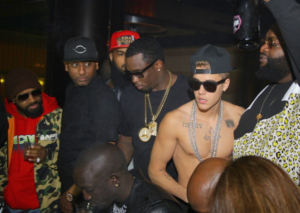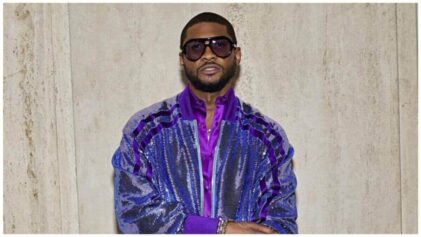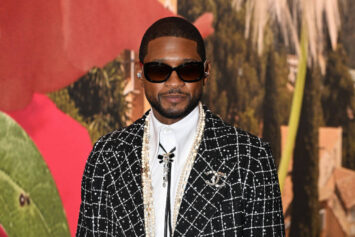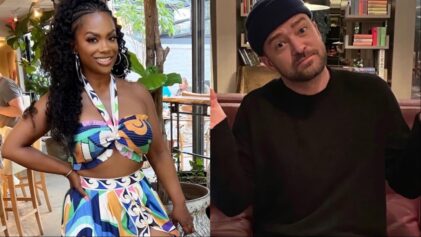In what took Usher most of his 20-year music career to accomplish, it took Justin Bieber just a short five years to reap similar financial success and actually surpass his mentor.
Usher Raymond IV was an R&B phenom who started his career much like Bieber as a young teen and is among America’s top-selling artists. He saw something special in the young star during their initial meetings. But that does not explain the rate at which Bieber shot to fame compared to his current counterparts such as Jason Derulo, Trey Songz and even Chris Brown. In fact, Justin Bieber rose faster to financial prowess, singing R&B/pop music, than any other Black entertainer, ever, despite this being a genre created by their own kin. This is something W.E.B. Du Bois referred as the “wages of whiteness” in his seminal work, Black Reconstruction.
The inherent worth and sublime value of white skin privilege (in part) captures that “something more” that Usher articulated in reference to Bieber during his 2010 interview with the LA Times. With his unearned privilege, Bieber was able to emulate his Black contemporaries and generate massive profits beyond their reach. As his early appearance was that of a clean-cut “boy-next-door” from Canada with good looks (and luscious locks) singing pop, he has since morphed his image into the pants-sagging, tattooed “bad boy,” suffusing his music with an urban contemporary vibe. This is an attempt at acting cool, and his public “persona” is imbedded within popular perceptions of Black manhood.
Black men and boys are “onstage” every day. Their audience, both outside whites as well as other Blacks in or outside their communities, can be caught looking in on them, observing how they walk, talk, dress and adapt to their social environments. For whites, these patterns are frequently seen in widespread media portrayals that represent the “thug life” and gang banging most often associated with Black males. But for Blacks, this posing of “coolness” becomes a symbol of acceptance among peers. Cool masculinity or “cool pose,” according to Majors and Billson, is a way of being for many Black males, a performance born out of the stark realities of centuries-old white supremacy and ongoing oppression. Black bodies become the instrument used to hold at bay the anxiety-related troubles brought on by daily insults from members of the dominant group and the institutions they control. This form of ritualized masculinity is typically seen in the sporting world, the hip-hop scene and other spaces where Black males congregate. Cool pose is about self-presentation of style — the art of aloofness and emotional detachment, postulating toughness and strength as acceptable forms of male behavior. But in reality, these narratives revolve around the struggle for self-determination and the validation of manhood.
Because Blacks have little to no control over their social condition in life, cool pose then is a source of empowerment. It was erected deep within the psychology of Black men and boys to assuage the pain and legacy of restricted opportunities from mainstream sources of success to include material wealth and comfort, components of the “American Dream.” When viewed and labeled by the white world as deviant, deficient, promiscuous, criminal and incompetent, cool provides the smokescreen to hide the torment and anger deep within the soul. This process of self-preservation is accomplished with a distinct style of coping through surface acting, an exhibition of physical actions intended to ward off the harmful effects of white racism and cynicism that can lead to feelings of self-doubt and interpersonal angst. Cool enhances the ego and sense of pride while concealing deep scars of Black male group marginalization. Not always done under conscious impulses, but instead involves unconscious thought and actions, it allows some Black males to present a hard exterior by showing little or no fear in situations that dictate a dynamic interaction.
Cool pose is about the maintenance of rough and tumble masculinity through the demands of living in a Black body, enabling Black males to develop thick skin through interpersonal strivings to enhance their self-esteem. Cool, then, is a projection of confidence in the midst of insecurity, and being cool brings some semblance of order to life for Black males that they might not otherwise have.
People are stereotypically drawn to cool Black males because they represent vitality, making them instantly marketable. The way Black males are cast in the media highlights the aesthetics of cool, rendering it a commodity to be bought and sold by the sports/entertainment industrial complex. But cool came about as a way to survive the harsh brutality and environmental morass of slavery and its lingering effects up until the present day. In a racist society where stigmatized males of color are locked out of virtually every major institution and denied access to jobs, high-quality education and decent and affordable health care, all that is left to defend is one’s pride, something that many Black men lose their lives over daily in some form as a consequence of being cool.
Even still, whites have a long history of appropriating coolness, not caring to know its pathogenic origins, particularly in music. Because many whites feel that U.S. society is now “post racial,” enabling them to “get their Black on” without a physical presence in the Black community, white label executives package Black culture and style through white artists without the burdens of racial disadvantage. Manufacturing coolness for white consumption through the use of Black memes is a burgeoning industry, it always has been. This is an important finding when cultivating a white blue-eyed mainstream soul performer touched by African-American musical expression and inspiration that lends to their own blending of unique panache. Elvis was one of the original white artists to gain worldwide fame by performing iterations of Black music and Black “moves.” In more recent years, Memphis’s other native son, Justin Timberlake, as well as the rappers Eminem, Iggy Azalea, Macklemore and singer Robin Thicke have all been celebrated for capturing in song or sound the spirit of Black music, and they have all made a killing in record sales and digital downloads. But none more than Justin Bieber, whose net worth is a reported $200 million.

Representation of Blackness as exotic and base, closer to nature and animal-like are racial frames lodged deep in the minds of most white Americans. Because racism is foundational to the American experience, all things associated with Blackness has been deemed different, deficient and outside the confines of white normativity. The process works differently, however, when white males perform (musically and physically) Black music. These young, white artists are regaled by their fans, earning a legion of global followers and the spoils of fame.
The Scooter Brauns of the music industry (the man credited with discovering Bieber) are on the constant lookout for the next white, “cool” soul artist to fill the coffers. The intersection of white, male-gendered privilege and their superior position atop of the U.S. racial hierarchy makes these border crossings into Black music seamless. When white artists adopt hip-hop or R&B as their preferred art form, they do so from a perspective that is out of context. Hence, another generation of newcomers like Austin Mahone, the incarnation of Bieber, can enjoy the benefits of “acting Black” without shouldering the racial burden of being Black.
Darron T. Smith is a frequent political and cultural commentator for Huffington Post on various issues of inequality in the form of racism, classism and other systems of U.S. based oppression. He has also contributed to various forums from Religion Dispatches and ESPN’s Outside the Lines to The New York Times and Chicago Tribune op-ed sections. His current book, “The Truth About the Honor Code: When Race, Religion & Sports Collide,” is scheduled for release in 2015. follow him @drdarronsmith


